Choosing machine embroidery threads
Today I would like to talk about threads for machine embroidery projects. This information will be interesting and informative for both beginners who have just set foot on the path of machine embroidery, and for experienced embroiderers.
Now many of you will think, “Well, what should I know? After all, the thread for embroidery machines is not so much. I can count them on my fingers: metallic, cotton, acrylic, viscose and polyester.” Yes, indeed these threads for machine embroidery projects are the most popular and widely used. However, there are many others that we did not know or hear about, but they help to simplify the embroidery process and the accompanying sewing process. I will tell you a secret, I learned about some types of these threads not so long ago. In addition, I just want to share with you, my favorite customers.
Today we will talk about choosing machine embroidery threads. Conditionally, we divide them into two categories: traditional and non-traditional. The most popular and widely used threads (viscose, polyester, cotton thread, acrylic and metallic) are referred to traditional threads. Moreover, although there is a lot of information about them, we will try to systematize it and choose the main from the whole stream highlight for those who only joined us and have not yet become expert in embroidery.
In addition, we will consider and unconventional threads for machine embroidery projects, which are little known, but in fact are very useful. I think many people want to know about such miracle-threads. Nevertheless, everything has its time. As they say, we will keep an intrigue.
Let us start.
Widespread threads for machine embroidery projects or how to make a right choice
First, let us talk about the application and characteristics of viscose threads. Embroiderers use these threads for machine embroidery projects for many years. Perhaps, they came to us immediately after the appearance of machine embroidery. If we talk about the properties of viscose threads, then they include:
~ Softness (the threads are very soft for the touch)
~ Variety of colors (a large selection of colors and shades is excellent, for example, for the shadow satin stitch, since viscose yarns help to perfectly convey the shadow transition with the help of different shades of a single color range).
~ Brilliant surface (in this case, it is perfect for embroidery on leather and suede).
~ When embroidering does not make loops, which is very important.
~ You can purchase threads of different thicknesses (from 12 to 60)
~ Do not damage the equipment, for example, like polyester or metallic. Therefore, it is easier for choosing machine embroidery threads.
~ Excellent erase and do not change the appearance even after several washings.
~ Excellent dry cleaning.
You embroider with viscose threads any designs on any fabric-based. In addition, viscose yarns are available in price. And this, perhaps, is one of the main advantages of their choice. These are universal thread for the embroidery machine, which simply must be in the arsenal of everyone who is engaged in machine embroidery projects. That is way they are the most popular for choosing machine embroidery threads.
Next, we will talk about polyester. Polyester thread is molten polyethylene, which is stretched on special equipment. In other words, they are threads from special polyester fiber, which are widely used both in embroidery and in sewing.
The main properties of such threads are:
- Strength, durability, resistance to bending and abrasion. Such threads are stronger than viscose.
- Have a greater shine than viscose. However, at the same time, matte polyester threads (for example, Madeira’s Frosted Matt) also became popular.
- Can cause loops during embroidery.
- The embroidery deforms more than the viscose thread.
- Excellent transfer of laundry at high temperature, whitening, soaking and even ironing.
- Do not burn out under the influence of sunlight and do not lose their strength.
- You can use with it dry cleaning, even with the using of special chemicals.
Polyester threads for machine embroidery are also popular and widespread, like viscose. What are the most appropriate for choosing machine embroidery threads, it is up to you to decide.
Bedford Cotton threads
Cotton threads for the machine embroidery projects is not as strong as viscose and polyester. They can lose a little strength after a long time of using and do not withstand long washings. However, they have a number of undisputed advantages. Firstly, cotton threads are ideal for embroidery to be similar to manual embroidery. With this task, neither polyester nor viscose can cope. That is why, we RECOMMEND using such threads for our designs made in the technique of manual satin stitching. This is embroidery, which is the most similar to hand embroidery. It will be just a perfect combination. If you embroider such a design with cotton thread, embroidery just cannot be distinguished from hand embroidery. It seems like you were sitting and sewing for hours.
In addition to these properties, cotton has some others. They include:
~ Not a wide range of colors. There more natural colors and shades dominates.
~ Sensitivity to chemical agents for washing, bleaching and high temperatures.
~ Can change the appearance under the influence of sunlight (burn out or deform).
~ Available in a wide range of thicknesses (from 30 to 120).
~ The shuttle can become dirty during operation, since the thread is not as smooth as viscose or polyester.
~ Naturally, like every thread, cotton threads have their shortcomings. However, the result is worth it.
Lana Wool/Acrylic Embroidery Thread
Acrylic, or, as it also called, woolen threads for the machine embroidery projects are thick, spun polyester threads. The main aim of choosing machine embroidery threads of this type is to imitate wool in machine embroidery. They are excellent for machine embroidery on both knitted and crocheted products.
The main characteristics of acrylic threads include:
~ Strength and wear resistance. Even after prolonged wearing, they do not tear; they do not change shape and, in the end, do not deform the embroidery.
~ Give the embroidery a three-dimensional, slightly fluffy texture.
~ Do not require special needles for machine embroidery, for example, as metallized threads.
~ Bright saturated color.
Such a thread is ideal for our designs of machine embroidery with imitation of wool. Embroidery will look just great.
A metallic thread
A metallic thread, or, as it also called, metallic is a combination of 100% polyester with a top foil ball. As a rule, it is produced in two colors: golden and silvery. However, some manufacturers also produce colored metallic threads for machine embroidery.
The characteristics of the metallic for machine embroidery projects include:
~ Brilliant appearance and beauty. These threads give the embroidery incredible luxury and wealth.
~ May occur with a textured surface.
~ Unfortunately, they do not have such flexibility as polyester or viscose.
~ Cannot be applied to all types of fabric. So think carefully about where to apply them. Moreover, it is better to try always out a trial version of the design on a piece of cloth.
~ They can be twisted during embroidery or unwound from the reel.
~ Have a not very large palette of colors.
~ There are different thicknesses (from 15 to 50).
~ Require a special needle for metallic threads.
~ Do not tolerate bleaching and washing at high temperatures.
As you noticed, metallic has many negative qualities. However, we have an alternative and an excellent way out. This is the thread Guttermann Sulky Silver. We often use these threads to test our designs and we can say with confidence that they are much better than the usual metallic. First, they do not harm the embroidery machine. Secondly, they pass well through the eye of the needle, without breaking it. Thirdly, they do not harm the tension regulator of the thread and do not lead to its rubbing. Fourthly, they have a large palette of colors.
We have already spoken about choosing machine embroidery threads, which are the most common. Now it is time to talk about unconventional threads. Get ready it will be interesting.
Threads for machine embroidery, which cause delight and surprise
Further we will talk about threads, the existence of which will cause surprise for many. Do you want to know about how it is possible and what is the purpose? Let us start with more understandable and finish with the most interesting options.
First, we will talk about thick metallic threads. This thread for machine embroidery projects are the yarns with the thickness of 35 to 50. It is not difficult to guess that from ordinary metallic, to which everyone is already accustomed, these threads differ in thickness. Use such a thread to give the embroidery volume and the formation of a textured surface. Thick metallic is perfect for embroidering designs of crosses, symbols of eastern religions. (You can find such designs in the corresponding section of our collection). Such a thread produces a well-known German company Madeira, which has grown fond of already many embroiderers. They go under the FS label.
The process of embroidery with such threads is not as complex as it seems at first glance. The main thing is that you need to read correctly the manufacturer’s instructions. Therefore, for example, Madeira advises to use such thick threads with the needle # 90/14.
Embroidery with such threads turns out to be voluminous, textured and simply remarkable. Do not forget about the correct stabilization of the fabric.
Flat metallic thread
Now we will speak about flat metallic thread. It is quite popular and is produced by many well-known manufacturers but under different names. Below you can see popular manufacturers of threads and the corresponding name of flat metallic.
Gunold ~ Glitter
Guttermann ~ Sulky Holoshimmer
Hologram ~ Wonderfil
Madeira ~ Spectra
If to say in a simple way, then this thread is a thin shiny strip, which is poured into the light. If we talk about the rules of using such a thread, we can distinguish the following:
~ Always check the way the thread is removed from the spool – straight and cross. In the second method, the thread is twisted, making the embroidery process difficult. Therefore, we recommend using a mesh and putting it on top of the bobbin.
~ Use a suitable needle.
Therefore, there is nothing complicated here.
Madeira Supertwist threads
The next thread will be the thread for the machine embroidery projects Super Twist (Supertwist). These threads are a combination of metallized polyester (30%) and polyamide (70%). This structured thread allows you to enrich even the most, at first glance, simple embroidery. You can buy it in two weight categories: â„– 30 and â„– 12. This means, respectively, that embroidery can be thinner, and thicker.
There are no special recommendations for embroidery with such threads. The only thing that you can slightly loosen the thread on the tension regulator. However, do not overdo it, so it may lead to the appearance of unnecessary loops.
Madeira produces such threads. However, the most successful are the threads of the American manufacturer TEXMAC, called Lame Stylo. They are not cheap, and they are not so easy to find in stores, but embroider with them is a pleasure.
Next, I would like to tell you about the luminous in the dark (fluorescent) thread. Glow-in- the-dark threads for machine embroidery projects have in their composition micro particles of glass lenses with high retro reflective coefficient. In daylight, such embroidery has a matte finish, and at night begins to shine. It is enough 15-20 minutes of light absorption, and embroidery will be simply unforgettable in the dark.
If you decided choosing machine embroidery threads, which glow in the dark, embroider it with contour designs on a black background.
The most popular manufacturers of glow-in-the-dark threads are Gunold and Guttermann.
Reflective thread
The next even more surprising type of thread is the reflective thread for the embroidery machine. Are you surprised? Some time ago, I was surprised no less than you were. Therefore, what are these threads used for and what their features are? Now I will tell you.
Embroidery with reflective threads is often not used in everyday life, as is the customary embroidery with viscose or polyester. Often, such threads are used for patches and chevrons on the forms of firefighters, and workers of other dangerous professions, in contact with fire.
Madeira has such threads called Madeira Fire Fighter.
If to consider and think about the using of such threads in ordinary human life, you can use them to embroider tight designs on kitchen accessories. Still useful such threads will be on the embroidery of outer clothing for smokers. Imagine, the ash fell from a smoker to a jacket with embroidery, but nothing happened.
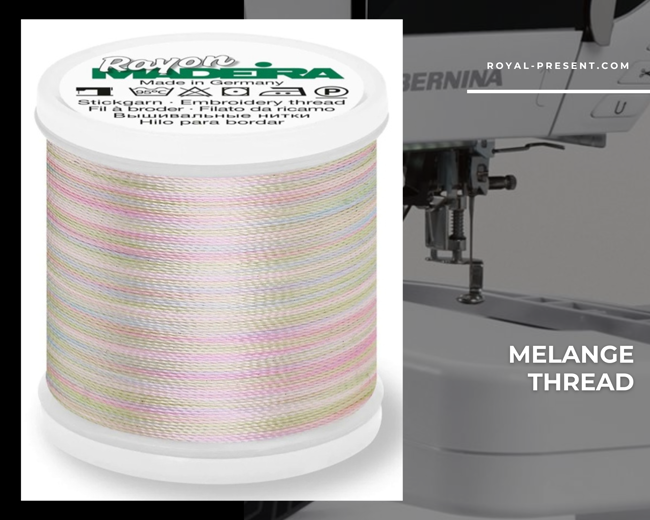
Melange thread
Furthermore, there are Melange thread for machine embroidery. Melange thread are multicolored threads. They combine all kinds of bright colors in one thread. Many argue that in the coil such threads look unusual and interesting, but ready-made embroidery turns out, to put it mildly, strange. However, we still found the appropriate scope for these colorful and bright threads.
An excellent idea will be embroidery with such threads on children’s jersey. For example, on onesies, T-shirts, especially it will look good on white fabric.
Despite the fact that the mélange threads for machine embroidery are not very popular, and often give a completely unpredictable effect, they still exist. It means that they are simply obliged to apply and have a number of their individual advantages.
If you decided choosing machine embroidery threads of this type, you can find them in such well-known manufacturers as Gunold, Madeira, and Guttermann.
No less interesting are the threads for the embroidery machine Chameleon threads
Thanks to the photochromic function, these threads change color when they are directly exposed to sunlight.
In daylight, the thread color is white, but when the sun’s rays hit them, it changes to a different color. In general, you can meet seven kinds of such threads. The speed of changing the color of the thread depends on the power of the ultraviolet rays under which it will be located. In the bright sun, the threads can change color only in 60 seconds. Is it interesting, isn`t it? Just a minute and your embroidery has acquired a completely different look.
Still there are threads that you can use for sewing. However, they are also useful to create a unique object with embroidery. These include water-soluble threads, invisible-thread, glue thread and a tightening thread.
Water-soluble thread
Water-soluble threads, it is clear from the name, dissolve when water gets on them. It maybe sounds useless and strange. However, it is actually a very useful thing. Water-soluble threads are designed for basting. Now you do not need to waste time trying to whip out a stitch. It is just enough to use these wonderful threads. In addition, after you stitched the product, you just left it wet and the seam itself disappears. Is it cool? In addition, no more scissors.
The price is high, but it is worth it. Believe me, I got such threads and did not regret at all. A bright representative of such threads is Wash Away thread from Madeira.
Invisible-threads for machine embroidery projects are used for hidden seams. They are threads from 100% polyamide fibers. Now only you will know your secret seams on clothes.
A bright representative of invisible threads is Monofil from Madeira.
The adhesive thread consists of polyamide (80%) and polyester (20%). You can apply it to the edge of the product. With the using of these threads, it turns out perfectly smooth.
Instructions for the using of a glue thread:
~ Apply a wide zigzag seam to the edge of the fabric.
~ If you decide to make the smooth edge using an adhesive thread on the over lock, check that the thread is located on the wrong side of the seam.
~ Bend the fabric with the adhesive side of the thread inward.
~ Iron the edge of the product using a steam (time – 15 seconds).
~ Leave the product for a while.
~ If you have ironed the fabric incorrectly, tear the edge; release the steam generously onto the fabric. Then, glue the fabric again.
In addition, we will finally speak about a special bobbin shrink thread for machine embroidery projects. Under the influence of high temperature, such a thread shrinks and the fabric is not. Previously, it was used only in sewing. However, we found a way to apply it for the embroidery. A useful bobbin shrink thread will become for quilt technique. It is enough just to sew the embroidered fabric with such threads and iron it. The thread will shrink, thereby creating an exclusive object in the style of patchwork sewing.
We examined with you choosing machine embroidery threads. I sincerely hope that this information will be useful for you. If I find some new and interesting types of threads, I will certainly inform you. So watch out for our machine embroidery blog. Successful and fruitful embroidery process to you!
To learn something new and important, see the second part of this article.
You may also like

Author: Ludmila Konovalova
My name is Lyudmila Konovalova, and I lead Royal Present Embroidery. Embroidery for me is more than a profession; it is a legacy of my Ukrainian and Bulgarian heritage, where every woman in my family was a virtuoso in cross-stitch and smooth stitching. This art, passed down through generations, is part of my soul and a symbol of national pride.
Date: 03.04.2018

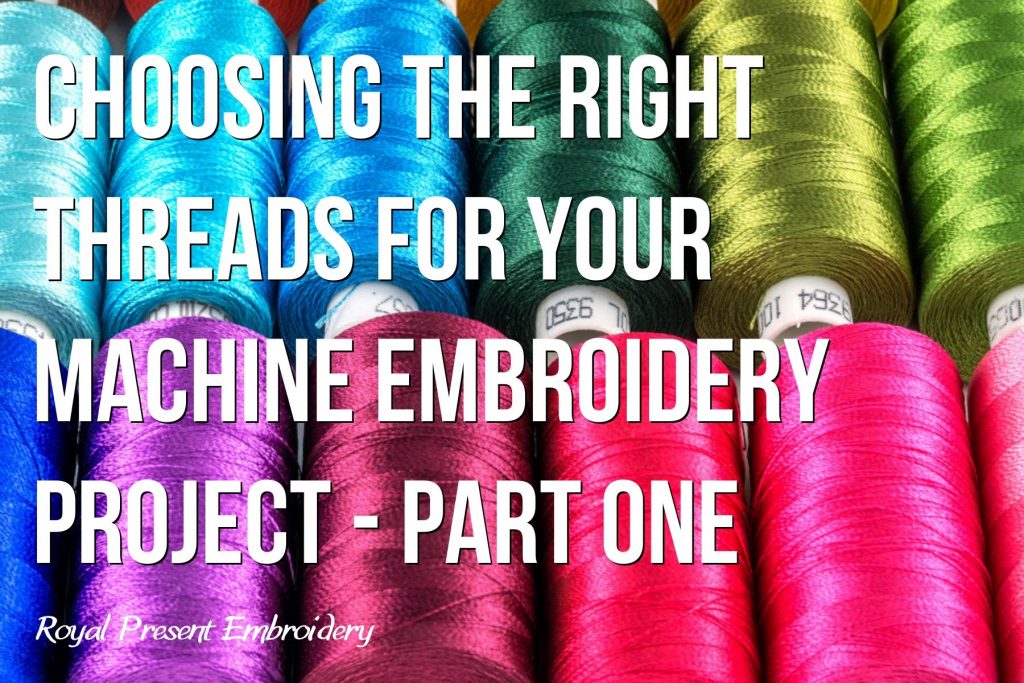

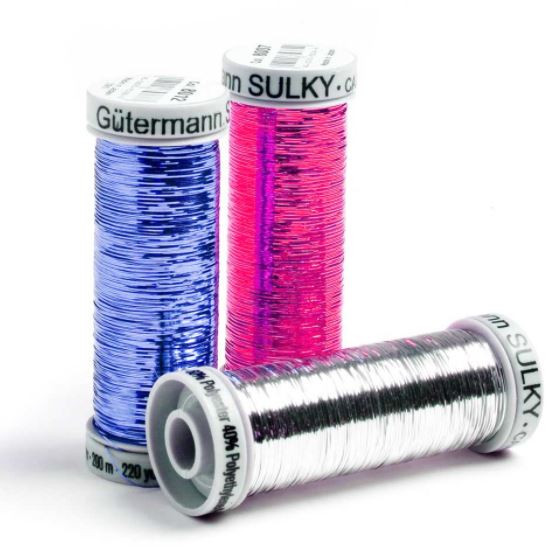
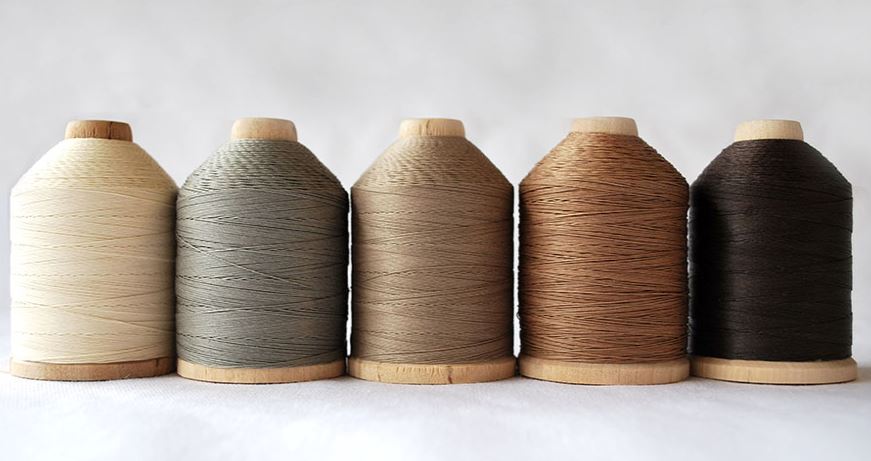
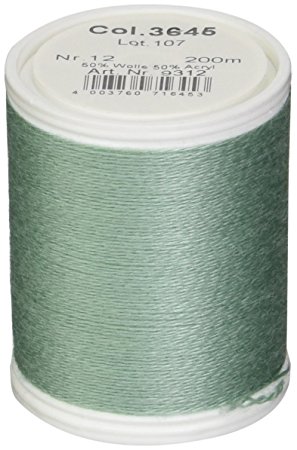
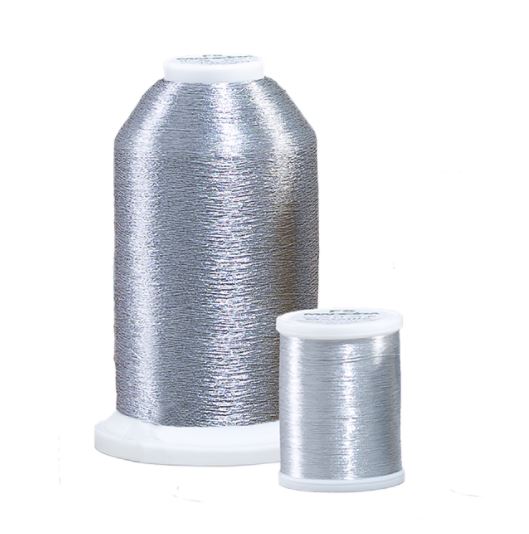
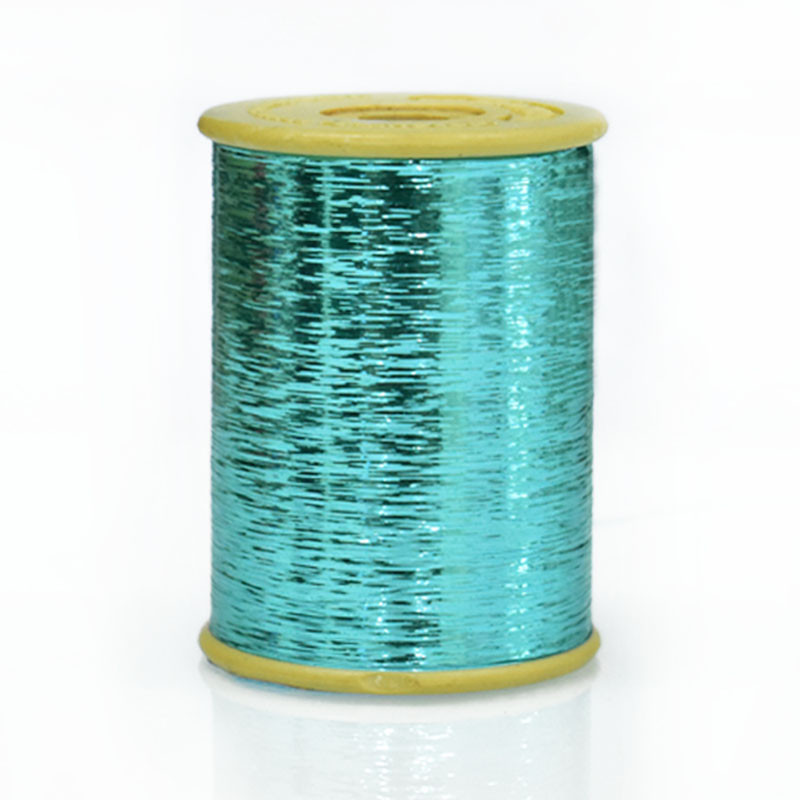

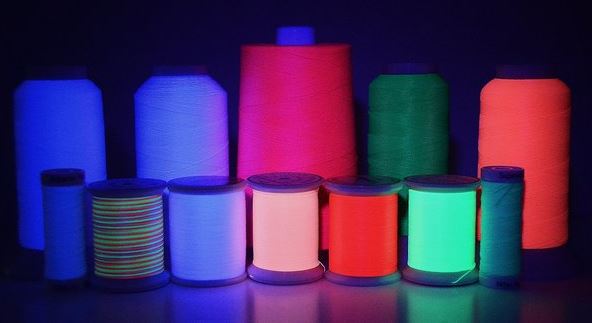


 Get Sign-In Link
Get Sign-In Link Login with Google
Login with Google Login with Facebook
Login with Facebook Login with Amazon
Login with Amazon Login with Paypal
Login with Paypal